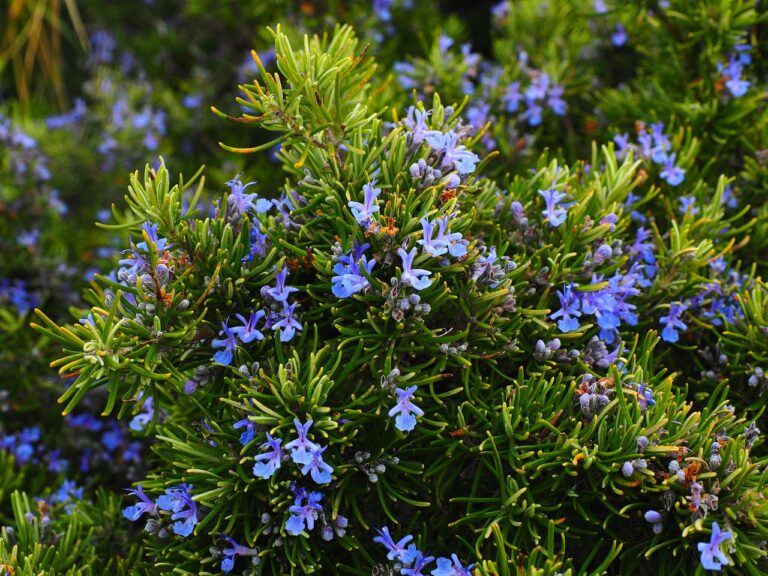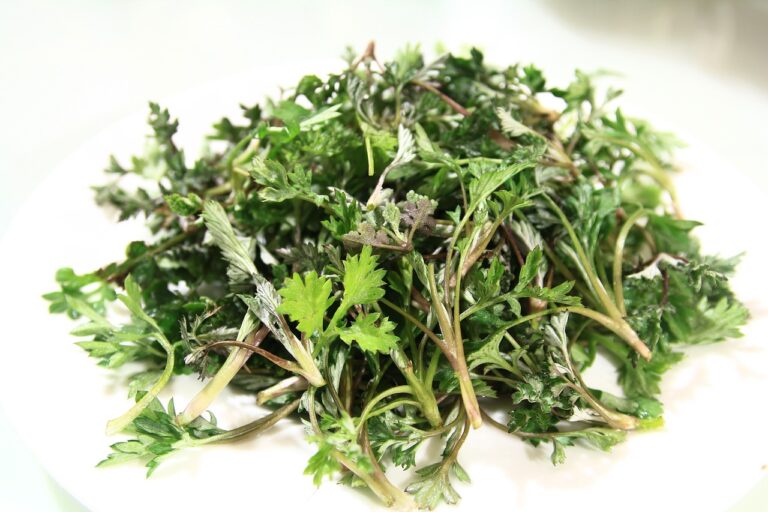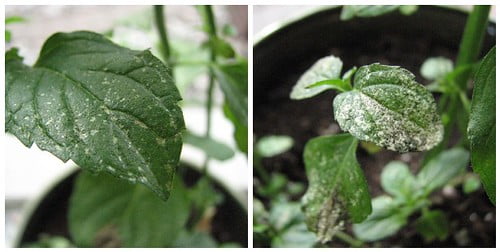Perilla
Perilla, a herb abundant in fiber, calcium, and vitamins, provides vast health benefits and culinary applications. Its oil aids heart health and cognition. Perilla‘s antimicrobial properties combat oral bacteria. In traditional medicine, it addresses issues like bloating. Essential caution is needed due to potential allergies. Consulting healthcare professionals is vital, especially during pregnancy and breastfeeding. Safety measures are paramount to safeguard maternal and infant health. Perilla’s use in these periods requires careful consideration for potential risks. Its diverse uses and nutritional composition make it a valuable addition for overall well-being. Further insights await for those seeking in-depth knowledge.
Health Benefits of Perilla
Perilla, a plant known for its health benefits, exhibits a range of medicinal properties that contribute to overall well-being. The leaves of Perilla contain compounds that have been linked to enhancing cognitive function, particularly in elderly individuals. Studies have shown that these compounds can positively impact mental health. Additionally, Perilla seed oil is of particular interest due to its antiobesity effects. Research suggests that the oil can inhibit adipocyte differentiation, thereby aiding in weight management and improving conditions such as hypertriglyceridemia.
Moreover, Perilla demonstrates antimicrobial activity through its polyphenols, effectively combating oral pathogenic bacteria. This antimicrobial property not only benefits oral health but also contributes to overall well-being by reducing the risk of infections. Additionally, Perilla is known for its ability to alter serum triglyceride levels, which is essential for maintaining cardiovascular health.
Culinary Uses of Perilla
Frequently used in Korean culinary traditions, perilla leaves play a versatile role in enhancing the flavor profiles of various dishes. Here are some key culinary uses of perilla leaves in Korean cuisine:
- Wrapping Grilled Meats: Perilla leaves are commonly used to wrap grilled meats, imparting a distinct flavor and aroma to the dish. The leaves add a fresh and herbaceous note that complements the savory grilled meats.
- Pickled in Soy-sauce-based Jangajji: Perilla leaves can be pickled in soy-sauce-based jangajji, adding a unique tanginess to the dish. The pickled leaves offer a burst of flavor that enhances the overall taste of the dish.
- Seasoned with Gochugaru for Kimchi: Perilla leaves are often seasoned with gochugaru to make kimchi, providing a spicy kick to the traditional fermented dish. The combination of perilla leaves and gochugaru results in a flavorful and aromatic kimchi variation.
- Blanched or Stir-fried for Namul: Perilla leaves can be blanched or stir-fried to create seasoned namul, a popular side dish in Korean meals. The leaves absorb the seasoning well, offering a revitalizing and enriching addition to the meal.
In Korean cuisine, perilla leaves are valued for their unique taste and aroma, making them a versatile ingredient in various dishes.
Traditional Medicine Applications of Perilla
Used in Traditional Chinese Medicine, perilla, known as zi su, has been employed for centuries to address various health concerns, such as bloating and respiratory issues. In TCM, perilla is considered a fundamental herb due to its diverse therapeutic properties. The medicinal efficacy of perilla is attributed to compounds like perilla ketone and terpenoids found in its leaves. These phytochemicals contribute to perilla’s anti-inflammatory, antioxidant, and antimicrobial actions, making it a valuable herb in traditional medicine.
When preparing perilla for medicinal use, it is important to be cautious as handling the leaves or oil can lead to contact dermatitis due to its potent nature. This highlights the significance of proper protective measures when working with perilla in its various forms. Additionally, consuming excessive amounts of perilla seeds can result in severe allergic reactions, including anaphylaxis. Therefore, it is advisable to adhere to recommended dosages and consult with a healthcare provider before incorporating perilla into medicinal treatments.
Nutritional Value of Perilla
Rich in vital nutrients and bioactive compounds, perilla offers a valuable addition to a balanced and nutritious diet. Here are some key points highlighting the nutritional value of perilla:
- Perilla leaves: These leaves are filled with dietary fiber, calcium, iron, thiamine, vitamins A, C, and riboflavin. They provide a range of essential nutrients necessary for overall health.
- Perilla oil: Extracted from the seeds of Perilla frutescens var. frutescens, perilla oil is commonly used in Japanese cuisine as a cooking oil and condiment. It is rich in beneficial fatty acids that support heart health and overall well-being.
- Perilla Seed: The seeds of Perilla are utilized in a variety of dishes such as salads, meat dishes, and curries in different culinary traditions. They add a nutty flavor and are a good source of essential nutrients.
- Minty Flavor: Perilla belongs to the mint family and has a distinct minty flavor. This unique taste not only enriches the culinary experience but also provides antioxidant properties.
Incorporating perilla into your diet can be a flavorful way to boost your nutrient intake and promote overall health.
Perilla Seed Oil Benefits
Packed with alpha-linolenic acid, perilla seed oil offers a range of beneficial effects for heart health and cognitive function, making it a sought-after ingredient for its numerous health benefits. The presence of alpha-linolenic acid, an omega-3 fatty acid, in perilla seed oil is particularly remarkable for its potential to improve heart health. Studies suggest that this compound may also boost cognitive function, especially in elderly individuals. In addition, perilla seed oil has been found to have antiobesity effects by inhibiting adipocyte differentiation, making it a promising natural approach for weight management.
Apart from its cardiovascular and cognitive benefits, perilla seed oil shows promise in promoting mental health and gut function. Research indicates that the oil’s components contribute to these positive effects. Additionally, perilla seed oil polyphenols exhibit antimicrobial activity against oral pathogenic bacteria, highlighting its potential role in oral health.
Precautions When Using Perilla
Caution should be exercised when considering the use of perilla due to the potential for allergic reactions and uncertain safety during pregnancy and breastfeeding. When using perilla, the following precautions are essential:
- Allergic Reactions: Some individuals may experience allergic reactions to perilla extract and oil. Symptoms can range from mild skin irritation to more severe reactions. It is important to perform a patch test before using perilla products extensively.
- Safety During Pregnancy and Breastfeeding: The safety of perilla during pregnancy and breastfeeding is uncertain. It is advisable to avoid its use during these periods unless otherwise directed by a healthcare provider.
- Consult Healthcare Professional: Before incorporating perilla extract or oil into your routine, especially if you have allergies or are pregnant or breastfeeding, consult a healthcare professional. They can provide personalized advice based on your medical history and current health status.
- Monitor for Adverse Effects: While perilla extract and oil are generally well-tolerated, sensitive individuals may experience adverse effects. Monitor for any unusual symptoms or reactions and discontinue use if any concerns arise.
Given the limited long-term safety studies on perilla extract and oil, using this botanical product requires caution and vigilance to ensure its safe and effective use.
Perilla in Pregnancy and Breastfeeding
Research on the safety of consuming perilla during pregnancy and breastfeeding remains limited, necessitating caution and consultation with healthcare providers for pregnant and breastfeeding individuals. Perilla, scientifically known as Perilla frutescens, contains compounds that may have effects on hormonal levels and uterine contractions, potentially impacting pregnancy outcomes. Due to the lack of thorough studies, the specific risks and benefits of perilla consumption during pregnancy and breastfeeding are not well-defined.
Pregnant women and breastfeeding mothers should be aware of the possibility of allergic reactions to perilla, which could pose risks to both the mother and the baby. Allergic responses may range from mild symptoms like skin rashes to severe reactions that affect breathing and circulation. For individuals in these stages, exercising caution when considering the use of perilla products is important.
Consulting healthcare providers before using perilla during pregnancy and breastfeeding is vital to safeguard the safety of both the mother and the infant. Professionals can provide personalized guidance based on individual health conditions and potential interactions with medications or existing treatments. Given the limited data available, erring on the side of caution is advisable when incorporating perilla into the diet or as a supplement during pregnancy and breastfeeding.





